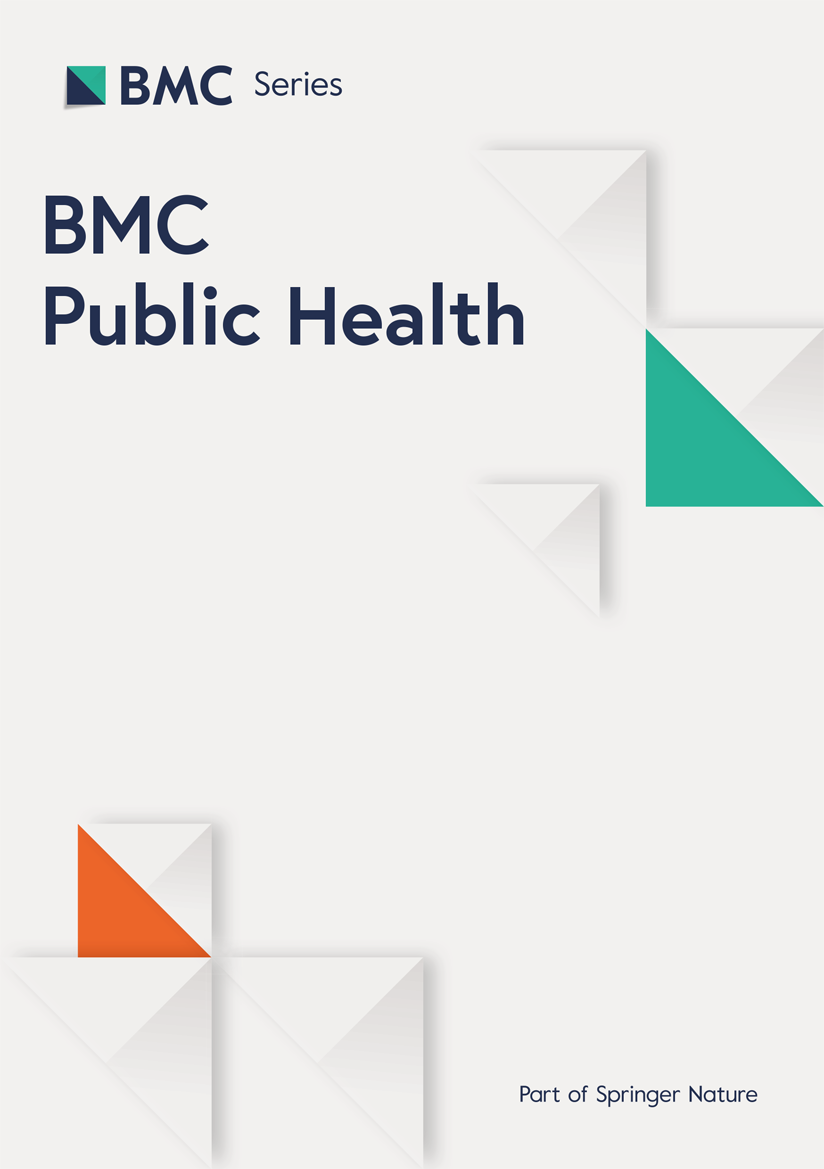BMC Public Health volume 25, Article number: 482 (2025) Cite this article
Traumatic Brain Injury (TBI) is a critical public health issue in the United States, contributing significantly to morbidity, mortality, and healthcare costs. Accounting for a substantial proportion of injury-related deaths and disabilities, TBI impacts a wide demographic, with particularly high incidence rates among young and elderly populations. Despite earlier declines, recent years have seen an uptick in TBI-related fatalities. This study aimed to evaluate the patterns and geographical disparities in mortality related to TBI among the adult population in the United States.
We examined the death certificates sourced from the Centers for Disease Control and Prevention Wide-Ranging Online Data for Epidemiologic Research (CDC WONDER) database to identify adults in whom TBI was documented as an underlying or contributing cause of death between 1999 and 2020. Age-adjusted mortality rates (AAMRs) per 100,000 individuals and annual percent change (APC) were computed and stratified based on year, gender, race/ethnicity, and geographic region.
Between 1999 and 2020, 1,026,185 TBI-related deaths occurred among adults aged ≥ 25 years. The AAMR remained stable from 22.2 in 1999 to 22.3 in 2007, followed by an insignificant decline to 21.5 in 2010, and a steeper significant subsequent increase to 24.6 in 2020. Men had consistently higher AAMR than women from 1999 (men: 35.6; women: 11.1) to 2020 (men: 38.8; women: 11.9). The 85 + years age group had the highest AAMR 118.5 trailed by 75–84-year age group at 53.2. American Indian or Alaska Native adults had the highest AAMR (31.9) followed by White (24.4). South had the highest AAMR (25.3), followed by West (22.7). Non-metropolitan areas consistently had higher mortality rates compared to metropolitan areas.
Following a brief period of stability in TBI-related mortality from 1999 to 2010, there has been a subsequent increase of 1.3% per year in mortality till 2020. Notable geographic and demographic disparities persist, underscoring the need for further research and precise health policy interventions to better understand and address these differences.
Traumatic Brain Injury (TBI) is a significant public health concern in the United States (US). It has profound impacts on morbidity, mortality, and healthcare expenditures [1]. TBI is a leading cause of death and disability in the nation, accounting for 30–50% of all injury-related fatalities and disability-adjusted life years lost [1,2,3,4]. Each year, an estimated 1.7 million individuals suffer from TBIs, with approximately 52,000 Americans succumbing to TBI-related injuries [2, 5]. This equates to roughly 190 fatalities per day [6]. These incidents encompass a wide range of severity, from mild concussions to severe cranial traumas [7, 8]. While there was a significant decline in TBI-related mortality rates from 1999 to 2013, with an Average Annual Percent Change (AAPC) of -4.6%, subsequent years saw an increase in TBI-related fatalities from 2013 to 2017, with an AAPC of 3.8% [9]. In 2013, the US recorded approximately 2.87 million TBI-related cases, including emergency department visits, hospitalizations, and fatalities, highlighting the gravity of the issue [1]. TBIs can result from various causes, leading to a diverse range of cranial traumas [5]. TBI-related deaths in the US are predominantly associated with intentional injuries (i.e. suicide and homicide), which were primarily facilitated by firearms. These were followed by unintentional falls and motor vehicle crashes [10, 11]. While TBIs affect individuals of all age groups, the highest incidence occurs among those aged up to 17 years and those over 75 years old [1]. Despite extensive research, the calculation of stable annual estimates stratified by age group and principal mechanism of injury was hindered by the relatively limited sample sizes from databases and hospitals. The Centers for Disease Control and Prevention (CDC) emphasizes the significance of TBIs in public health due to their profound implications for disability and fatality. The rationale behind this investigation into regional and demographic disparities in TBI-related mortality is multifaceted within the context of scientific inquiry. Firstly, identifying regions characterized by disproportionately high TBI-associated fatality rates informs the strategic allocation of medical resources and the tailoring of healthcare initiatives. Secondly, demographic variances shed light on the underlying risk factors and the effectiveness of preventive strategies. Therefore, based on the aforementioned evidence, our objective is to assess the variations in TBI-related mortality among adults aged 25 years and older in the US from 1999 to 2020, specifically focusing on demographic and regional trends and disparities.
This extensive investigation gathered mortality data from death certificates through the CDC Wide-Ranging ONline Data for Epidemiologic Research (CDC WONDER) database. Our analysis covered the period from 1999 to 2020, specifically focusing on mortality related to TBI among the adult population in the US. We employed the International Statistical Classification of Diseases and Related Health Problems, 10th Revision (ICD-10) coding system to perform diagnostic coding, following specific guidelines: ICD-10 codes: S01.0, S01.1, S01.2, S01.3, S01.4, S01.5, S01.7, S01.8, S01.9, S02.0, S02.1, S02.3, S02.7, S02.8, S02.9, S04.0, S06.0, S06.1, S06.2, S06.3, S06.4, S06.5, S06.6, S06.7, S06.8, S06.9, S07.0, S07.1, S07.8, S07.9, S09.7, S09.8, S09.9, T90.1, T90.2, T90.4, T90.5, T90.8, and T90.9. These ICD codes have been previously used to identify TBI cases in administrative databases [10,11,12,13,14,15,16,17]. The dataset we utilized comprises the causative factors of mortality, as recorded on death certificates encompassing all 50 states and the District of Columbia. In this study, we meticulously examined the Multiple Cause-of-Death Public Use records to identify deaths associated with TBI. We confirmed these cases by the presence of TBI explicitly mentioned on the death certificate, either as an immediate or a contributory cause of death. Adults were defined as those 25 years or older at the time of death. This investigation was deemed exempt from the requirement of local institutional review board (IRB) approval, as it exclusively employed de-identified datasets publicly disseminated by governmental authorities for general use. We diligently adhered to the STROBE (Strengthening the Reporting of Observational Studies in Epidemiology) guidelines throughout our study to ensure our findings’ systematic and comprehensive reporting [18].
In this study, two independent authors systematically collected and analyzed data related to key parameters, while the third author verified it. These parameters included population size, year, demographic characteristics, urban-rural categorization, and regional classification. Demographic attributes under investigation encompassed sex, age, and race/ethnicity. Age groups were defined as 25–34, 35–44, 45–54, 55–64, 65–74, 75–84, and 85 + years, while race/ethnicity categories included American Indian or Alaska Native, Asian or Pacific Islander, Black or African American, White, and Hispanic or Latino. We used the National Center for Health Statistics Urban-Rural Classification Scheme to classify the population, categorizing areas into Large Central Metro, Large Fringe Metro, Medium Metro, Small Metro, Micropolitan (Nonmetro), and Non-Core (Nonmetro) regions [19], which are defined as Large Central Metro: Densely populated core areas of metro regions with 1 M + population. Large Fringe Metro: Suburban areas surrounding large central metro cores. Medium Metro: Urban areas with a population of 250,000–999,999. Small Metro: Urban areas with a population of 50,000–249,999. Micropolitan (Nonmetro): Areas with an urban core of 10,000–49,999. Non-Core (Nonmetro): Rural areas with no urban core. Regional divisions were based on the Northeast, Midwest, South, and West geographical designations, according to the U.S. Census Bureau [20]. (Supplementary Fig. 1) It is important to note that the data used in this study is sourced from death certificates using the CDC WONDER database [21].
To examine national trends in TBI-related mortality, we calculated crude and age-adjusted mortality rates per 100,000 population from 1999 to 2020. These rates were stratified by age, year, sex, race/ethnicity, region, and urban-rural status, accompanied by 95% confidence intervals (CI). Crude mortality rates were determined by dividing the count of TBI-related deaths by the corresponding U.S. population for each year. Age-adjusted mortality rates were calculated by standardizing TBI-related deaths against the year 2000 U.S. population [22]. To assess annual national trends in TBI-related mortality, we utilized the Joinpoint Regression Program (Joinpoint V 5.0) [23]. This tool allowed us to calculate the Annual Percent Change (APC) in age-adjusted mortality rates (AAMRs) with a 95% CI. The Joinpoint Regression Program employs log-linear regression models to identify significant changes in AAMRs over time, helping detect temporal variations. The optimal number and location of joinpoints were determined using the weighted Bayesian Information Criterion (BIC), which balances model fit and complexity, thereby preventing overfitting. APC changes were categorized as increasing or decreasing based on whether the slope representing the change in mortality significantly differed from zero, determined through two-tailed t-testing. Statistical significance was established at a threshold of P < 0.05. Changes in the APC were assessed for significance using empirical quantile-based confidence intervals, which provide a more robust measure of variability, especially for smaller data segments. Only changes with 95% confidence intervals that did not include zero were considered statistically significant.
Between 1999 and 2020, 1,026,185 TBI-related deaths occurred among adults aged ≥ 25 years. (Supplemental Table 1) The TBI AAMR ranged from 22.2 (95% CI: 22.0–22.4) in 1999 to 24.6 (95% CI: 24.4–24.8) in 2020, reflecting a statistically significant cumulative increase of 10.81% (95% CI: 8.93–12.73) between 1999 and 2020. Men had consistently higher AAMR than women from 1999 (men: 35.6, 95% CI: 35.2–36; women: 11.1, 95% CI: 10.9–11.3) to 2020 (men: 38.8, 95% CI: 38.4–39.2; women: 11.9, 95% CI: 11.7–12.1). The 85 + years age group had the highest AAMR 118.5 (95% CI:117.9-119.1) trailed by 75–84-year age group at 53.2 (95% CI: 52.9–53.4). Non-metropolitan areas consistently had higher mortality rates compared to metropolitan areas. American Indian or Alaska Native adults had the highest AAMR 31.9 (95% CI: 31.2–32.5) followed by White 24.4 (95% CI: 24.4–24.5). South had the highest AAMR 25.3 (95% CI: 25.2–25.4), followed by West 22.7 (95% CI: 22.7–22.8).
The TBI AAMR increased from 22.2 (95% CI: 22.0–22.4) in 1999 to 24.6 (95% CI: 24.4–24.8) in 2020, reflecting a significant cumulative increase of 10.81% (95% CI: 8.93–12.73) in comparing 1999 to 2020. The overall AAMR did not change significantly from 1999 to 2007 (APC: 0.3, 95% CI: -0.2 to 2.1), followed by an insignificant decline from 2007 to 2010 (APC: -1.6, CI: -2.4 to 2.1), and then a significant incline from 2010 to 2020 (APC: 1.3, CI: 0.2 to 2.1) (Fig. 1, Supplemental Tables 2 and 3).
Overall and Sex-Stratified Traumatic Brain Injury-Related AAMRs per 100,000 in Adults in the United States, 1999–2020. Men 1999–2012 APC − 0.2459 (95% CI, -1.0637 to 0.0736) 2012–2020 APC 1.2422* (95% CI, 0.5905 to 3.2856), Women 1999–2011 APC − 0.1738 (95% CI, -1.0784 to 0.205) 2011–2020 APC 1.2422* (95% CI, 0.7082 to 2.7624), Overall, 1999 to 2007 (APC: 0.2867, 95% CI: -0.2201 to 2.0873) 2007 to 2010 (APC: -1.5692, 95%CI: -2.4303 to 2.0674) 2010 to 2020 (APC: 1.2866*, 95%CI: 0.2270 to 2.0607). *Indicates that the annual percentage change (APC) is significantly different from zero at alpha = 0.05. AAMR = age-adjusted mortality rate
Throughout the study period, men consistently exhibited higher AAMRs than women (AAMR men: 35.8; 95% CI: 35.7–35.9; women: 11; 95% CI: 11-11.1). In 1999, the AAMR for men was 35.6 (95% CI: 35.2–36), which non-significantly decline to 34.8 in 2012 (APC: −0.3, CI: −1.1 to 0.1), followed by a significant increase to 38.8 in 2020 (APC: 1.2, CI: 0.6 to 3.3). Similarly, the AAMR for women in 1999 was 11.1 (95% CI: 10.9–11.3), which non-significantly decreased to 10.5 in 2011 (APC: −0.2; 95% CI: −1.1 to 0.2), followed by a significant increase to 11.9 in 2020 (APC: 1.3; 95% CI: 0.7 to 2.8) (Fig. 1, Supplemental Tables 2 and 3).
When stratified by race/ethnicity, AAMRs were highest among American Indian or Alaska Native patients, followed by White, Black or African American, Hispanic or Latino, and Asian or Pacific Islander populations. (AAMRs = American Indian or Alaska Native: 31.9; 95% CI: 31.2–32.5; White: 24.4; 95% CI: 24.4–24.5; Black or African American: 19.8; 95% CI: 19.7–20; Hispanic or Latino: 15.3; 95% CI: 15.2–15.4; Asian or Pacific Islander: 11.6; 95% CI: 11.5–11.8). The AAMRs for American Indian or Alaska Native exhibited non-significant decline (APC: -1.02: 95% CI -8.4 to 0.8) while Asian or Pacific Islander (APC: -1.76: 95% CI -6.0 to -0.5) exhibited a significant slight decline from 1999 to 2008, followed by a slight significant increase from 2008 to 2020 to 1.55 (95% CI 0.4 to 6.8) among American Indian or Alaska Native and non-significant increase among Asian or Pacific Islander 0.09 (95% CI -0.5 to 2.8) respectively. The AAMR for Black or African American (APC: -0.41: 95% CI -1.9 to 2.2) and Hispanic or Latino populations (APC: -1.18: 95% CI -4.3 to 3.2) non-significantly decreased until 2006 and 2007, with a steeper non-significant decline until 2010 with APC − 5.58 (95% CI -8.5 to 0.5) and − 5.27 (95% CI -6.8 to 1.9) respectively. Subsequently, there was a gradual non-significant increase from 2010 to 2018 with APCs of 2.13 (95% CI -5.2 to -3.4) and 1.03 (95% CI -6.2 to 3.3), and a steeper significant increment from 2018 to 2020, with APCs of 8.98 (95% CI 3.3 to 12.4) and 4.43 (95% CI 1.2 to 6.5), respectively. The AAMR for the White population slightly inclined non-significantly from 1999 to 2011 (APC: 0.62: 95% CI -0.9 to 1.5) and gradually increased significantly from 2011 to 2020 (APC: 1.24: 95% CI 0.8 to 2.9) (Fig. 2, Supplemental Tables 2 and 4).
Traumatic Brain Injury-Related AAMRs per 100,000 Stratified by Race in Adults in the United States, 1999–2020. American Indian or Alaska Native 1999–2008 APC − 1.0213 (95% CI, − 8.4457 to 0.8206) 2008–2020 APC 1.5549* (95% CI, 0.4429 to 6.8178), Asian or Pacific Islander 1999–2008 APC − 1.7574* (95% CI, − 6.0494 to − 0.5254) 2008–2020 APC 0.0877 (95% CI, − 0.5371 to 2.8343), Black or African American 1999–2006 APC − 0.405 (95% CI, -1.9015 to 2.173) 2006–2010 APC − 5.5746 (95% CI, -8.4593 to 0.5233) 2010–2018 APC 2.1269 (95% CI, -5.1818 to 3.3539) 2018–2020 APC 8.9783* (96% CI, 3.3073 to 12.3879), White 1999–2011 APC 0.6212 (95% CI, -0.9341 to 1.5392) 2011–2020 APC 1.2356* (95% CI, 0.8095 to 2.8839), Hispanic or Latino 1999–2007 APC − 1.1749 (95% CI, -4.252 to 3.2143) 2007–2010 APC − 5.271 (95% CI, -6.8297 to 1.8971) 2010–2018 APC 1.0315 (95% CI, -6.1605 to 3.3215) 2018–2020 APC 4.4282* (96% CI, 1.2393 to 6.459). *Indicates that the annual percentage change (APC) is significantly different from zero at alpha = 0.05. AAMR = age-adjusted mortality rate
When stratified by ten-year age groups, mortality rates were found to be highest among the 85 + years age group (118.5; CI: 117.9-119.1), followed by the 75–84 years age group (53.2; CI: 52.9–53.4), and then the 65–74 years (24.7; CI: 24.5–24.8), 55–64 years (18.8; CI: 18.7–18.9), 45–54 years (17.2; CI: 17.1–17.3), 25–34 years (16.6; CI: 16.6–16.7), and 35–44 years age groups (15.4; CI: 15.4–15.5). The rates for the 85 + years age group exhibited a steeper non-significant decline from 1999 to 2001 (APC: -2.83; 95% CI: -5.0 to 2.2), followed by a significant increase until 2020 (APC: 2.62; 95% CI: 2.4 to 3.0). The rates for the 75–84 age group steadily and significantly increased from 1999 to 2020 (APC: 1.12; 95% CI: 1.0 to 1.3). Rates for the 65–74 years age group experienced a non-significant decline from 1999 to 2011 (APC: -0.08; 95% CI: -1.0 to 0.3), followed by a significant increase until 2020 (APC: 1.02; 95% CI: 0.6 to 2.2). Rates for the age groups 55–64 years non-significantly and 45–54 years significantly increased from 1999 to 2009 (APC: 0.25; 95% CI: -0.7 to 0.7) and from 1999 to 2004 (APC: 1.53; 95% CI: 0.6 to 3.6), respectively, followed by a significant increase in the 55–64 years age group (APC: 1.27; 95% CI: 1.0 to 1.9) and a significant decline in the 45–54 years age group (APC: -0.39; 95% CI: -0.6 to -0.2) until 2020. Rates for the 25–34 years and 35–44 years age groups exhibited a steady and non-significant decline from 1999 to 2007 (APC: -0.48; 95% CI: -1.2 to 1.3) and from 1999 to 2006 (APC: -1.09; 95% CI: -1.8 to 0.9) respectively, followed by a steeper decline significant until 2010 (APC: -5.56; 95% CI: -7.2 to -2.1) and non-significant till 2011 (APC: -3.27; 95% CI: -5.6 to 0.6), respectively, and a significant increase was observed from then until 2020 among both groups (APC: 1.62; 95% CI: 0.9 to 2.7) and (APC: 1.66; 95% CI: 1.0 to 2.6) respectively (Fig. 3, Supplemental Tables 2 and 5).
Traumatic Brain Injury–related Crude Mortality Rates per 100,000 Stratified by Ten-year age group in Adults in the United States, 1999 to 2020. 25–34 years 1999–2007 APC − 0.4808 (95% CI, -1.178 to 1.3423) 2007–2010 APC − 5.5559* (95% CI, -7.2404 to -2.0736) 2010–2020 APC 1.6151* (95% CI, 0.9353 to 2.7318), 35–44 years 1999–2006 APC − 1.0875 (95% CI, -1.841 to 0.9442) 2006–2011 APC − 3.2665 (95% CI, -5.6428 to 0.6446) 2011–2020 APC 1.6648* (95% CI, 0.9577 to 2.6178), 45–54 years 1999–2004 APC 1.5281* (95% CI, 0.6216 to 3.5969) 2004–2020 APC − 0.3929* (95% CI, -0.6246 to -0.2238), 55–64 years 1999–2009 APC 0.2491 (95% CI,-0.656 to 0.6691) 2009–2020 APC 1.2667* (95% CI, 1.0237 to 1.9073), 65–74 years 1999–2011 APC − 0.0769 (95% CI, -1.0017 to 0.2597) 2011–2020 APC 1.0234* (95% CI, 0.6339 to 2.1721), 75–84 years 1999–2020 APC 1.1232* (95% CI, 0.9704 to 1.296), 85 + years 1999–2001 APC − 2.8285 (95% CI, -5.0436 to 2.235) 2001–2020 APC 2.6205* (95% CI, 2.4462 to 3.0417). *Indicates that the annual percentage change (APC) is significantly different from zero at alpha = 0.05. AAMR = age-adjusted mortality rate
When analyzing the data by geographic region, the AAMRs were highest in the South region at 25.3 (95% CI: 25.2–25.4), followed closely by the West at 22.7 (95% CI: 22.7–22.8), and the Midwest at 22.5 (95% CI: 22.4–22.6). The Northeast region had the lowest AAMR at 16.9 (95% CI: 16.8–17). The AAMRs in the South region remained stable from 1999 to 2006 (APC: 0.25; 95% CI: -0.4 to 0.9), declined non-significantly from 2006 to 2011 (APC: -1.47; 95% CI: -3.1 to 0.2), and then increased significantly again from 2011 to 2020 (APC: 1.10; 95% CI: 0.6 to 1.6). The AAMRs in the Midwest declined non-significantly from 1999 to 2011 (APC: -0.15; 95% CI: -0.6 to 0.3), while the West region saw a significant increase from 1999 to 2003 (APC: 1.50; 95% CI: 0.1 to 2.9) with a significant decline till 2010 (APC: -1.07; 95% CI: -1.8 to -0.3), followed by as significant increase in both the Midwest (APC: 2.24; 95% CI: 1.5 to 2.9) and West regions (APC: 0.93; 95% CI: 0.6 to 1.3) from 2011 to 2010, respectively, to 2020. The AAMRs in the Northeast region exhibited a significant slight increase year over year from 1999 to 2020 (APC: 0.78; 95% CI: 0.6 to 1.0). (Fig. 4, Supplemental Tables 2 and 6)
Traumatic Brain Injury–related AAMRs per 100,000 Stratified by Race in Adults in the United States, 1999–2020. Northeast 1999–2020 APC 0.7789* (95% CI, 0.5843 to 0.9739), Midwest 1999–2011 APC − 0.1507 (95% CI, -0.6486 to 0.3497) 2011–2020 APC 2.2376* (95% CI, 1.5301 to 2.9499), South 1999–2006 APC 0.2457 (95% CI, -0.4515 to 0.9478) 2006–2011 APC − 1.4744 (95% CI, -3.1489 to 0.2291) 2011–2020 APC 1.1033* (95% CI, 0.6150 to 1.5940), West 1999–2003 APC 1.5016* (95% CI, 0.0789 to 2.9446) 2003–2010 APC − 1.0730* (95% CI, -1.8200 to -0.3204) 2010–2020 APC 0.9281* (95% CI, 0.5789 to 1.2785). *Indicates that the annual percentage change (APC) significantly differs from zero at alpha = 0.05. AAMR = age-adjusted mortality rate
When examining data by urbanization, AAMRs were highest in Non-Core (Nonmetro) areas at 33.6 (95% CI: 33.4–33.8), followed by Micropolitan (Nonmetro) areas at 29.3 (95% CI: 29.1–29.4), Small Metro areas at 26 (95% CI: 25.9–26.2), Medium Metro areas at 24 (95% CI: 23.9–24.1), Large Fringe Metro areas at 19.6 (95% CI: 19.5–19.7), and Large Central Metro areas at 18.8 (95% CI: 18.7–18.9). The AAMRs in Non-Core (Nonmetro) areas exhibited a slight non-significant decline from 1999 to 2011 (APC: -0.1652, 95% CI: -2.8624 to 2.9388), while Micropolitan (Nonmetro) areas saw a slight non-significant increase from 1999 to 2013 (APC: 0.1268, 95% CI: -0.8932 to 0.4432), and both continued to increase significantly until 2020 (APC: 0.9931, 95%CI: 0.0288 to 4.1335; APC: 1.7113, 95% CI: 0.8764 to 4.3697). AAMRs in Large Fringe Metro and Medium Metro areas experienced a slight and non-significant increase from 1999 to 2011 (APC: 0.2127, 95% CI: -0.7848 to 0.5001; APC: 0.077, 95% CI: -0.6542 to 0.488), whereas Small Metro areas saw a non-significant decline during that period (APC: -0.0673, 95% CI: -0.5136 to 0.2402), followed by an increase in AAMRs in all three urbanization groups until 2020 (APC: 1.1706, 95% CI: 0.7658 to 2.5435; APC: 1.8261, 95% CI: 1.2749 to 3.0009; APC: 1.6293, 95%CI: 1.1968 to 2.342), but significant only in large fringe metro and medium metro. AAMRs in Large Central Metro areas remained stable from 1999 to 2007 (APC: 0.024, 95% CI: -0.6447 to 2.2368), followed by a steep non-significant decline from 2007 to 2010 (APC: -2.5102, 95% CI: -3.6451 to 1.4318), and then increased non-significantly from 2010 until 2020 (APC: 0.7854, 95% CI: -0.3283 to 1.9914) (Fig. 5, Supplemental Tables 2 and 7).
Traumatic Brain Injury–related AAMRs per 100,000 Stratified by Urban/Rural Classification in Adults in the United States, 1999–2020. Large Central Metro 1999–2007 APC 0.024 (95% CI, -0.6447 to 2.2368) 2007–2010 APC 2.5102 (95% CI, -3.6451 to 1.4318) 2010–2020 APC 0.7854 (95% CI, -0.3283 to 1.9914), Large Fringe Metro 1999–2011 APC 0.2127 (95% CI, -0.7848 to 0.5001) 2011–2020 APC 1.1706 (95% CI, 0.7658 to 2.5435), Medium Metro 1999–2011 APC 0.077 (95% CI, -0.6542 to 0.488) 2011–2020 APC 1.8261 (95% CI, 1.2749 to 3.0009), Small Metro 1999–2011 APC − 0.0673 (95% CI, -0.5136 to 0.2402) 2011–2020 APC 1.6293 (95% CI, 1.1968 to 2.342), Micropolitan (Nonmetro) 1999–2013 APC 0.1268 (95% CI, -0.8932 to 0.4432) 2013–2020 APC 1.7113 (95% CI, 0.8764 to 4.3697), Non-Core (Nonmetro) 1999–2011 APC − 0.1652 (95% CI, -2.8624 to 2.9388) 2011–2020 APC 0.9931 (95% CI, 0.0288 to 4.1335). *Indicates that the annual percentage change (APC) is significantly different from zero at alpha = 0.05. AAMR = age-adjusted mortality rate
In this comprehensive 22-year retrospective analysis of mortality data derived from the CDC WONDER database, notable findings have been discerned, carrying substantial implications for public health policy. Initially, the overall AAMR remained relatively stable from 1999 to 2007 (APC: 0.3, 95% CI: -0.2 to 2.1), followed by a slight non-significant decline from 2007 to 2010 (APC: -1.6, 95% CI: -2.4 to 2.1), and a subsequent significant upward trend from 2010 to 2020 (APC: 1.3, 95% CI: 0.2 to 2.1). This temporal pattern exhibited remarkable consistency across both adult male and female cohorts. Furthermore, a demographic analysis revealed that individuals belonging to the American Indian or Alaska Native racial group and the 85 years and older age cohort exhibited the highest TBI-related AAMRs in comparison to their respective counterparts. Additionally, pronounced regional disparities emerged, with the Southern region displaying the highest TBI-related AAMR, trailed by other regions. Furthermore, nonmetropolitan areas consistently exhibited elevated mortality rates when juxtaposed with their metropolitan counterparts.
Our investigation revealed a total of 1,026,185 TBI-related fatalities over a 22-year period. In comparison to findings from various geographical regions, a study conducted in Seychelles, East Africa, over 30 years (1989–2018), reported a considerably lower count of 327 TBI-related deaths [15]. In the People’s Republic of China, two separate studies covering eight years (2006–2013) and four years (2014–2018) reported 93,793 and 16,169 TBI-related deaths, respectively [16–17]. Additionally, a comprehensive study across 25 European countries in 2012 reported 33,415 TBI-related deaths [24]. Notably, our inquiry also underscores that the US exhibits the highest AAMR of 24.6 concerning TBI when juxtaposed against the aforementioned geographical regions, which ranges from 3-21 [15,16,17,–24]. The U.S. has a higher TBI mortality rate than China and European countries combined at any point in time, which is concerning given that these regions have a larger population. This variation among different economies can be attributed to several contributing factors, including disparities in healthcare infrastructure, socioeconomic differences, distinct safety regulations, variations in transportation systems, culturally influenced practices, discrepancies in preventive strategies, and differing degrees of urbanization [25], but mainly in US it is due to firearm injuries [26,27,28], whereas these are much less frequent in China or Europe [29–30]. Additionally, upon analyzing trends, it has been observed that the AAMR related to TBI continues to rise in subsequent years in the US [3, 4, 11, 31, 32]. In contrast, two separate studies from China [16–17] have shown a gradual decrease in the AAMR for TBI over the years. The higher mortality rates among adults in the US, compared to China, can be attributed to various factors including differences in growth and aging dynamics, an increase in motor vehicle accidents, assault and firearm-related injuries, falls, intentional self-harm, participation in sports and recreational activities, substance abuse, and limitations in timely access to healthcare services [1, 32–33].
Additionally, our investigation underscores a significant gender-based disparity in AAMRs, with males consistently exhibiting considerably higher AAMRs throughout the entire study period. This gender-based distinction aligns with findings reported in analogous studies conducted in other countries [15,16,17, 24]. However, a salient divergence emerges in the temporal trajectory of their AAMRs within our study. Specifically, our analysis reveals a discernible pattern wherein males displayed a declining AAMR trend until 2012, after which a marked and rapid increase occurred. In contrast, females exhibited a similar decreasing trend in AAMRs until 2011, followed by a slight increase in subsequent years, which is in agreement with two separate studies conducted in China [16–17]. In contrast, a study conducted by Abio et al., reported a significant decline in AAMR for men and a slight increase in AAMR for women [15]. The observed difference in our study can be attributed to male biological factors and a predilection for riskier behaviors, resulting in an elevated incidence of road traffic accidents and a higher propensity for involvement in instances of violence and assaults, among the western population compared to eastern parts of the world [34,35,36]. Moreover, the increase in TBI rates from 2011/2012 onward in our study may be influenced by factors such as changes in societal behaviors, including increased substance abuse, higher participation in high-risk activities (e.g., extreme sports), or a greater prevalence of motor vehicle accidents linked to distractions such as mobile phone usage. Additionally, improvements in data collection and reporting practices during this period may have contributed to the observed increase in documented TBI cases.
Moreover, our investigation reveals that the highest AAMRs were notably observed among older adults, specifically those aged 85 years and above, and individuals in the age range of 75–84 years, which aligns with studies conducted in China, and in older adults of the USA [16, 17, 37]. Conversely, research conducted in Seychelles presents a contrasting scenario, where TBI-related deaths are more strongly associated with younger adults compared to their older counterparts [15]. This discrepancy underscores the importance of considering regional and demographic variations in the impact of TBI in terms of age groups, emphasizing that the relationship between TBI and mortality is not universally consistent across different populations and age groups. The factors that collectively contribute to a higher burden of TBI-related mortality in the US among the elder population, include falls, road traffic accidents, health conditions like osteoporosis, elder abuse and generally having a larger aging population are more prominent shared risk factors [1, 11].
Our study identifies significant disparities in AAMRs related to TBIs among different racial groups in the US. Specifically, American Indian or Alaska Native patients have the highest TBI-related AAMRs, followed by White and Black or African American individuals [38–39]. Possibly, these disparities can be hypothesized to stem from various factors, which include socioeconomic disparities, cultural factors, higher rates of alcohol and substance use, variations in healthcare access and quality, and higher rates of violence [39,40,41,42,43]. Addressing these disparities through culturally tailored, multidisciplinary interventions may offer a pathway to mitigate racial disparities in TBI-related mortality among adults [44].
In addition, our study uncovers significant geographic disparities in TBI-related mortality among adults, with the South region of the US experiencing the highest burden. These disparities result from factors such as limited healthcare access and infrastructure, which lead to delayed or inadequate TBI treatment in some areas. Furthermore, the Southern region has exhibited a significantly higher incidence of homicide and suicide cases, approximately 40%, nearly double that of other regions [45]. These elevated rates have played a pivotal role in contributing to the heightened TBI-related mortality rates observed in the South region. Moreover, our findings also show that non-metropolitan areas have a higher TBI-related mortality burden among adults compared to metropolitan areas [45–46]. This is mainly due to limited healthcare access, socioeconomic disparities, and a higher incidence of high-risk activities, exacerbated by the reliance on personal vehicles in nonmetropolitan regions with limited public transportation options [45,46,47,48,49].
Several limitations should be noted. Firstly, reliance on ICD codes and death certificates introduces the risk of misrepresentation or omission of traumatic brain injuries (TBI) as a cause of death. The study lacks access to detailed clinical data, including TBI severity, comorbidities, and specific treatments administered, limiting the investigation into factors contributing to TBI mortality. Additionally, the study covers data from 1999 to 2020 but does not account for potential alterations in TBI diagnosis and reporting standards during this period, potentially affecting the accuracy of observed mortality rates and trends. While the study stratifies data by census regions and urbanization groups, it does not explore more localized geographic variations. Lastly, socioeconomic determinants of health, which can impact healthcare access, are not included in the study.
After a period of relative stability in TBI-related mortality AAMR among adults from 1999 to 2010, with subsequent annual increase of 1.3% through 2020. The highest AAMRs were observed among males, American Indian or Alaska Native individuals, residents in the Southern region of the US, and those in nonmetropolitan areas aged 25 and older. These findings underscore the need for targeted initiatives to prevent and appropriately manage TBIs among the adult population in the US. Furthermore, additional research is required to further explore the reasons behind these trends and disparities.
The datasets generated and/or analysed during the current study are available on Centers for Disease Control and Prevention Public database. [https://wonder.cdc.gov/mcd-icd10.html]
The authors would like to thank the Research Council of Pakistan for their support and assistance in the study.
As the data employed in this study is publicly accessible in the form of de-identified information from CDC, the study is exempt from the requirement for ethical approval and consent.
Not Applicable.
The authors declare no competing interests.
Springer Nature remains neutral with regard to jurisdictional claims in published maps and institutional affiliations.
Open Access This article is licensed under a Creative Commons Attribution-NonCommercial-NoDerivatives 4.0 International License, which permits any non-commercial use, sharing, distribution and reproduction in any medium or format, as long as you give appropriate credit to the original author(s) and the source, provide a link to the Creative Commons licence, and indicate if you modified the licensed material. You do not have permission under this licence to share adapted material derived from this article or parts of it. The images or other third party material in this article are included in the article’s Creative Commons licence, unless indicated otherwise in a credit line to the material. If material is not included in the article’s Creative Commons licence and your intended use is not permitted by statutory regulation or exceeds the permitted use, you will need to obtain permission directly from the copyright holder. To view a copy of this licence, visit http://creativecommons.org/licenses/by-nc-nd/4.0/.
Dawood, M.H., Fazli, Y., Lund, S. et al. Mortality trends of traumatic brain injuries in the adult population of the United States: a CDC WONDER analysis from 1999 to 2020. BMC Public Health 25, 482 (2025). https://doi.org/10.1186/s12889-025-21657-z
Received:
Accepted:
Published:
DOI: https://doi.org/10.1186/s12889-025-21657-z

















